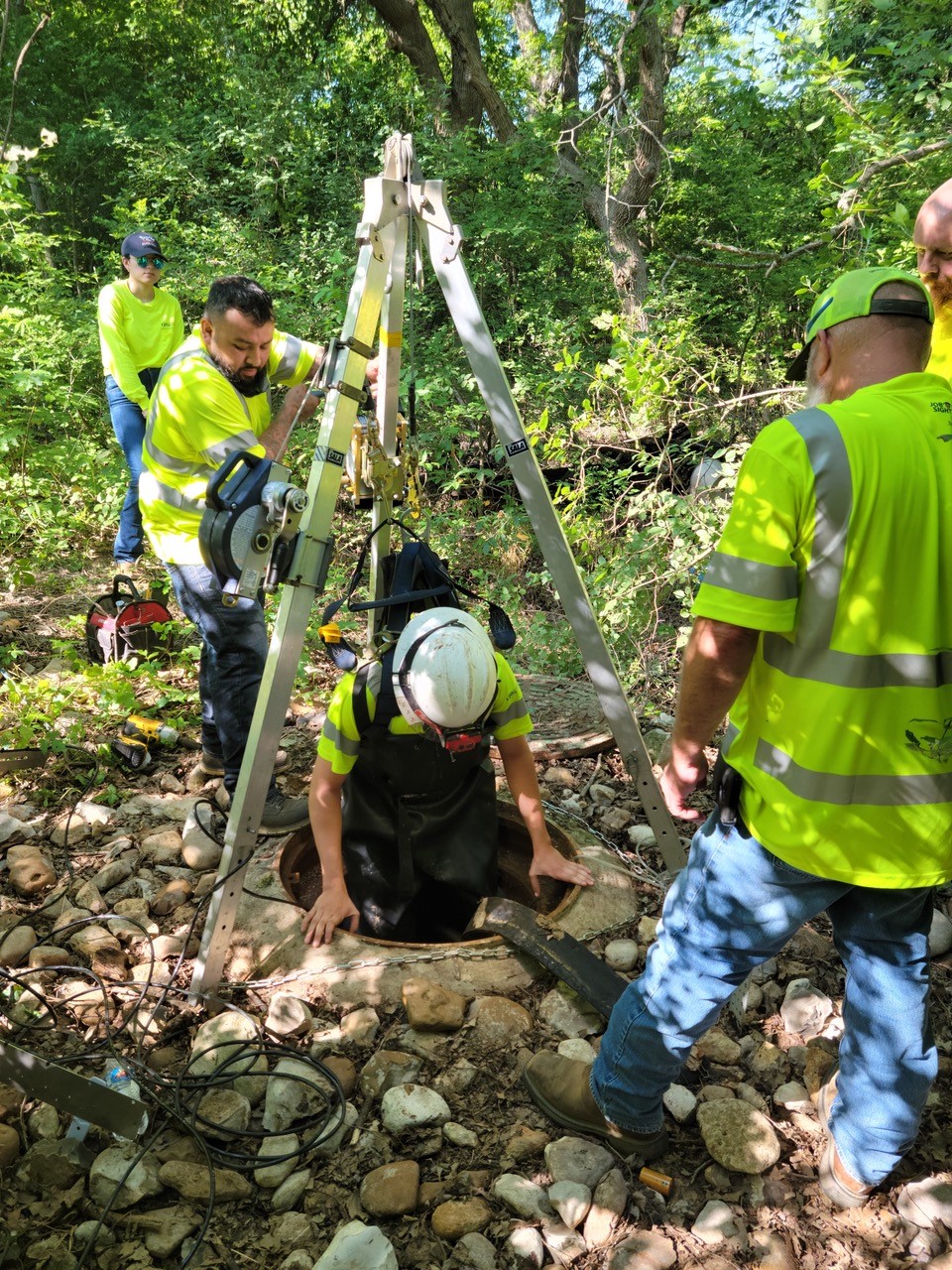
Filed away under the category of “essential work often taken for granted,” are manholes.
Everyone sees manholes on their visual periphery every single day, but how many people truly consider their function and importance?
Civil engineers certainly do, which is why the recent release of a third edition of Manhole Inspection and Rehabilitation, MOP 92, is a big deal in the industry.
The manual of practice was prepared by the Manhole Inspection and Rehabilitation Task Committee of the Pipelines Infrastructure Committee of the Pipeline Division of ASCE’s Utility Engineering and Surveying Institute in partnership with the Manhole Rehabilitation Committee of NASSCO.
The manual’s editor Joanne Carroll, Aff.M.ASCE, has more than three decades of experience in the industry and now runs her own consulting company, Subtegic Group Inc. in Cary, North Carolina. Her time on the ASCE Pipelines Infrastructure Committee dates to the 1990s, and she played a key role in the previous two iterations of MOP 92, including also serving as editor of the second edition.
Ahead of next month's UESI Pipelines 2023 Conference, Carroll recently talked to Civil Engineering Source about the manual and why manhole maintenance is such a critical component of keeping cities safe.
Civil Engineering Source: Can we start with just a quick introduction to manholes and what they do?
Joanne Carroll: There are estimated to be over 25 million manholes in the United States, and that’s just sanitary sewer manholes. Manholes are the primary point of access for the maintenance and inspection of the 800,000-plus miles of the buried sewer pipelines that we have here in the United States. The manholes themselves are sometimes overlooked with the focus on the pipelines, but these structures need to be kept safe and leak-free.
Manholes, the pipelines themselves, and the laterals, which are the smaller pipelines that serve buildings can be considered the three major components in a wastewater collection system. An objective of those involved in the wastewater industry is to limit the water that goes through those pipelines into the treatment facility to actual wastewater. Unfortunately, as our pipelines, manholes, and those laterals begin to deteriorate, groundwater and surface water infiltrates and flows into our collection system. This unwanted flow increases the volume of water entering the wastewater treatment plants or ends up overflowing into the streets and waterways as the collection system is overwhelmed. So, we’re trying to limit that through the rehabilitation of the manholes.

Source: Broadly speaking, what then do industry professionals rely on this manual of practice to help them with?
Carroll: This manual, MOP 92, provides information on how to inspect manholes by identifying points where there is infiltration taking place; where corrosion has deteriorated that manhole structure – where structural integrity has been breached or is in the process of being breached. The inspection allows for an assessment of those manholes and quantifies their condition, which allows us to identify how they can be most cost-effectively repaired.
MOP 92 also includes information on the actual methods of stopping infiltration, eliminating corrosion, and performing structural repairs. It provides all the different technologies and materials available today and good practices on selection and use of them.
The manual also provides guidance on illustrating how the repairs are cost-effective. Ultimately, manhole rehabilitation can help jurisdictions comply with consent orders from the EPA through reduction of unwanted flow resulting from infiltration and inflow at or within the manholes.
Source: What else can people expect to see in this third edition?
Carroll: We have a new chapter on the design of manhole rehabilitation specific to the wall thickness. Whenever you’re using any type of full-depth renewal systems, whether they’re cementitious materials or polymeric materials, one of the key quality controls is how thickly you apply those materials in your repair.
This new chapter marks the first time that we’ve had anything published through ASCE on the wall thickness design, so that’s a significant aspect of this third edition. We have a new chapter on the design of manhole rehabilitation specific to the wall thickness of full-depth rehabilitation using cementitious and polymeric materials. Whenever you’re using any type of full-depth renewal systems one of the key quality controls is how thick those materials need to be applied to meet the intended performance criteria.
Learn more about the third edition of Manhole Inspection and Rehabilitation, MOP 92.
ASCE’s 2023 UESI Pipelines Conference is Aug. 12-16 in San Antonio, Texas. Learn more.



